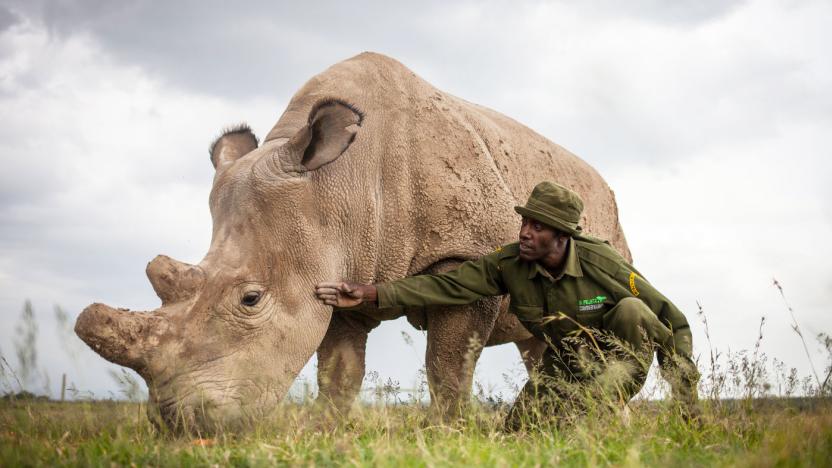InVitroFertilization
Latest

Scientists successfully bred baby mice from skin cells
A team of scientists at Japan's Kyushu University has successfully turned the skin cells of a mouse into mature egg cells used to breed viable offspring. According to a new paper in the journal Nature, the process could eventually be used in human reproduction without the need for egg cells at all.

Scientists hope to save near-extinct rhinos by transforming cells
The northern white rhinoceros is in far worse straits than most rhinos. There are just three members of the species left, and they can't breed normally -- if nothing happens, extinction is guaranteed. And that's leading researchers to try a dramatic technological solution to keep the northern white rhino around. They're planning to transform both frozen and living rhino cells into stem cells that could grow into eggs and sperm for the in vitro fertilization of a surrogate southern white rhino. This would not only resurrect the species, but create enough diversity that the new population should survive in the wild.

"Silicone womb" enters human testing in the UK
In-vitro fertilization may soon become much more effective, if a new device dubbed the "silicone womb" comes out of testing successfully. Currently test-tube embryos are developed in an incubator, but the .2-inch long silicone womb, produced by Anecova, allows them to be implanted inside the mother for up to four days, during which time they're exposed to the uterus through 360 40-micron holes. The goal is to develop stronger, more resilient embryos for eventual pregnancy, but a small test in Belgium has so far proven inconclusive as to the device's effectiveness -- and some researchers doubt it'll work at all, since the embryos will be located in the uterus rather than the fallopian tubes where they would naturally develop. Still, there's hope that the environment inside the uterus will be an effective substitute -- to quote one researcher, "it's a lot closer to a fallopian tube than a plastic tray." 40 women are signed up for testing starting today, but results aren't expected for some time.
